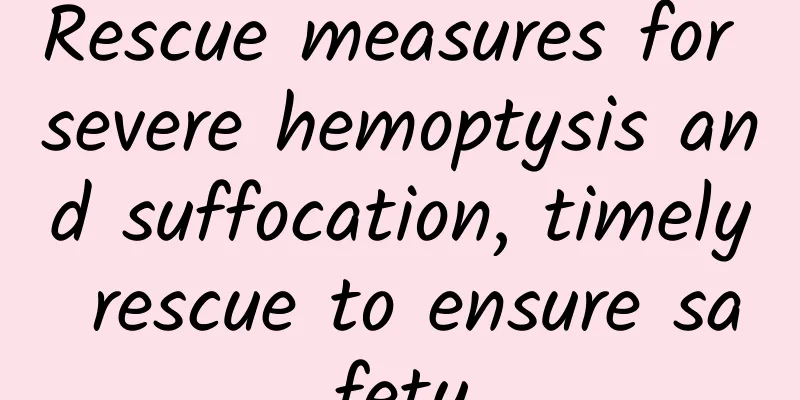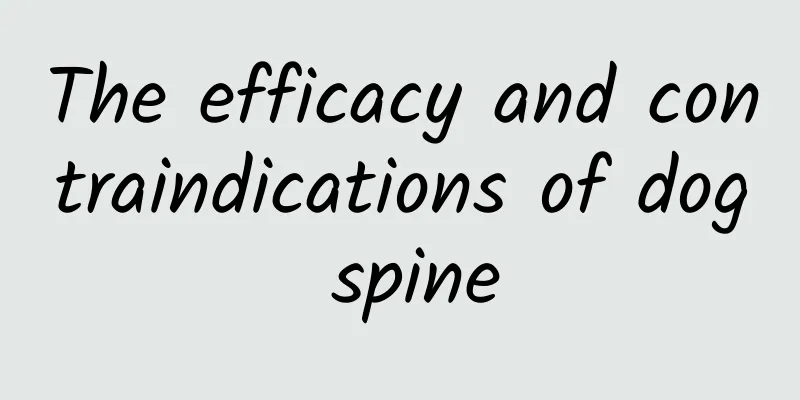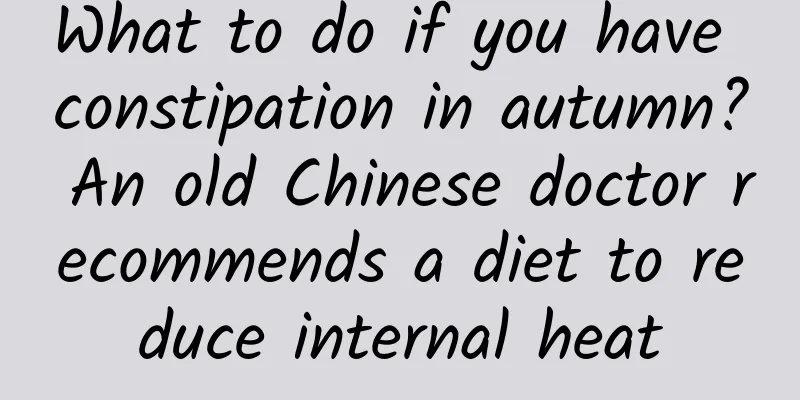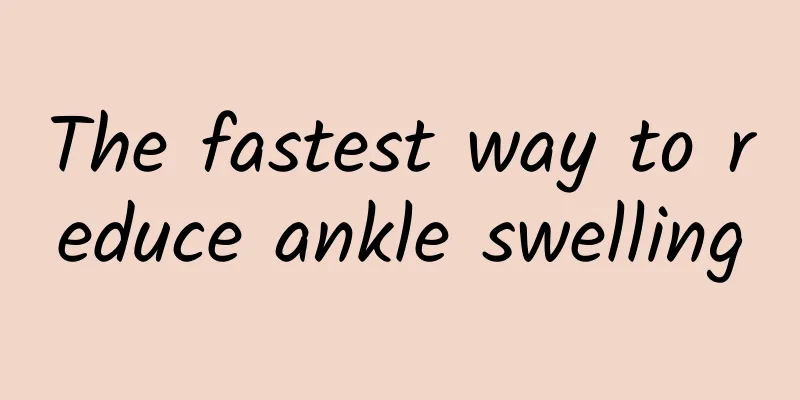Rescue measures for severe hemoptysis and suffocation, timely rescue to ensure safety

|
The most serious threat to the patient's life from massive hemoptysis is that it causes suffocation. If symptoms of massive hemoptysis and suffocation occur, emergency and scientific treatment measures must be taken to ensure life safety, and the rescue process must be quick and accurate. 1. Rescue measures for massive hemoptysis and suffocation The main cause of death from hemoptysis is suffocation. Therefore, we should pay attention and be vigilant to the occurrence of suffocation and be familiar with the diagnosis and rescue measures of hemoptysis suffocation. The whole process of suffocation usually takes 3 to 6 hours. Minutes, so we must seize every second and be quick, timely and accurate. Once suffocation occurs, the blood and blood clots blocking the respiratory tract must be removed as soon as possible to restore the airway to normal breathing. Treatment method: Immediately lift the patient's lower body, remove blood clots, give oxygen, strengthen the heart, stop bleeding, and deal with complications such as shock, atelectasis, and pneumonia. Treatment of severe hemoptysis 1. General treatment Patients with severe hemoptysis are required to rest in bed. Medical staff should guide patients to lie on the affected side and provide explanations to eliminate their tension and fear. During hemoptysis, unnecessary movement should be reduced as much as possible to avoid aggravating bleeding due to bumps on the way and causing suffocation and death. At the same time, patients should be encouraged to cough up old blood retained in the respiratory tract to avoid airway obstruction and atelectasis. If the patient is overly nervous, a small dose of sedatives can be used, such as diazepam 2.5 mg, taken orally, twice a day, or diazepam injection 10 mg intramuscularly. For those with frequent or severe coughing, antitussive drugs can be given, such as pentoxyverine 25 mg, orally, 3 times a day; or eprazone 40 mg, orally, 3 times a day. If necessary, codeine 15-30 mg can be given orally, 3 times/d. However, cough suppressants should not be taken by elderly and frail patients. Morphine and pethidine are prohibited for patients with impaired lung function to avoid suppressing the cough reflex and causing suffocation. 2. Hemostasis treatment (1) Drug hemostasis: ① Posterior pituitary hormone: It can directly act on vascular smooth muscle and has a strong vasoconstrictive effect. After taking the medicine, due to the contraction of the pulmonary arterioles, the blood flow in the lungs decreases sharply and the pulmonary circulation pressure decreases, which is conducive to the formation of blood clots at the ruptured pulmonary blood vessels and achieves the purpose of hemostasis. Specific usage: 5-10U of posterior pituitary hormone 20-40 ml of 25% glucose solution, slowly injected intravenously (10-15 minutes to complete the injection); or 10-20 U of posterior pituitary hormone 5% glucose solution 250-500ml, intravenous drip. Repeat once every 6 to 8 hours if necessary. During medication, if the patient experiences side effects such as headache, pale complexion, sweating, palpitations, chest tightness, abdominal pain, urge to defecate, and increased blood pressure, care should be taken to slow down the rate of intravenous injection or drip. It should be used with caution or not at all in patients with hypertension, coronary heart disease, arteriosclerosis, cor pulmonale, heart failure or during pregnancy. ② Vasodilators: By dilating pulmonary blood vessels, they reduce pulmonary artery pressure, pulmonary wedge pressure and pulmonary wedge impaction pressure; at the same time, systemic vascular resistance decreases, the amount of blood returning to the heart decreases, and the blood in the lungs is diverted to the limbs and visceral circulation, playing the role of "internal bloodletting". This causes the pressure in the pulmonary artery and bronchial artery to decrease, thus achieving the purpose of hemostasis. It is especially suitable for patients with hypertension, coronary heart disease, cor pulmonale and pregnancy who have contraindications to the use of posterior pituitary hormone. |
<<: How to check for nephritis? 6 methods to help you diagnose
>>: What causes nephritis in children? Have you discovered the early symptoms?
Recommend
Serious symptoms of cervical spondylosis
Everyone should be familiar with cervical spondyl...
Right arm muscle twitching
There are actually a lot of muscles in the arms, ...
What are the functions of deep-sea fish oil and what are the therapeutic effects of deep-sea fish oil?
EPA and DHA contained in fish oil belong to the Ω...
How many stages are there for renal failure?
Nowadays, many people often encounter the problem...
What are the benefits of cat’s claw? What are the soups for clearing away heat, detoxifying and removing dampness?
As summer turns to autumn, dampness, heat and tox...
The urine is yellow and foamy. Do you think it is just a simple case of getting angry? How should it be treated?
Urinating is a very common thing in life, so when...
What causes pain in the middle of the chest?
From a clinical perspective, pain in the middle o...
What to do if you have ammonia poisoning
Ammonia is a common gas and we cannot live withou...
How to make a soup that moistens the lungs, relieves cough and reduces phlegm
When I was a child, I liked to eat anything. Some...
What's up with no nipples?
Female friends should be alert to the symptoms of...
High globulin
Globulin is mainly a simple sexual protein, just ...
What are the dietary taboos while taking Chinese medicine?
We all take traditional Chinese medicine in our d...
How can breast cysts disappear?
Breast cysts can also be called mammary gland cys...
What causes cervical vertebrae pain?
The most common cause of soreness and swelling in...
Can I take a shower after sweating due to a cold?
Many people think it is normal to take a bath aft...









